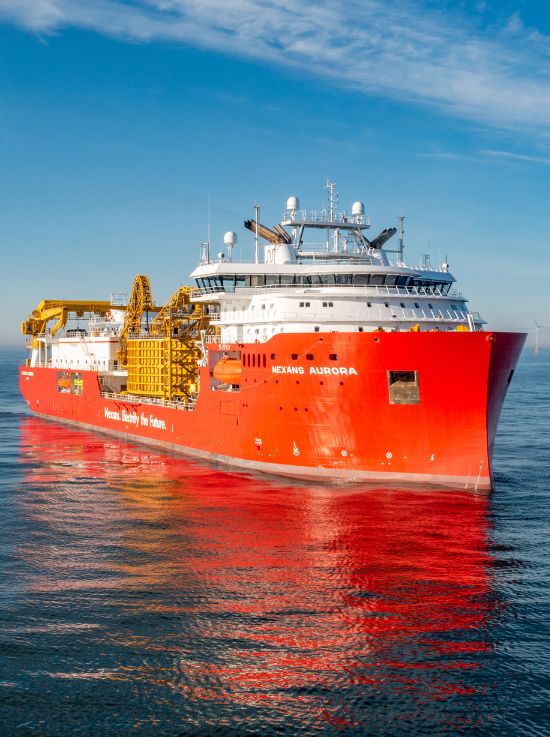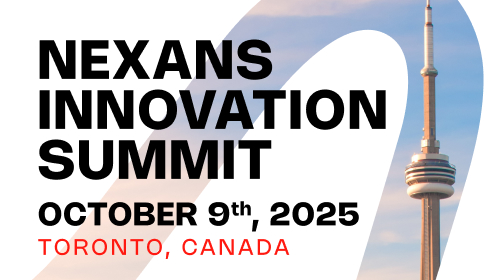Nexans CRYOFLEX® technology enables the creation of simple and maintenance-free flexible cryogenic lines. In the 1970s, this technology made possible the industrial development and installation of the first superconducting cable by Nexans.
Cryogenic
systems

Cryogenic transfer systems ensure safe and efficient transfer of fluids at very low temperatures (nitrogen -196°C, hydrogen: -253°C, helium: -269°C) between a storage tank and a point of use, while limiting thermal losses. The key element of the cryogenic system is the vacuum-insulated transfer line, also known as the cryogenic line. Composed of double-walled piping, cryogenic lines feature advanced thermal insulation, achieved through the synergistic action of high vacuum and multilayer material reflecting thermal radiation.
What are cryogenic transfer systems used for?
Cryogenic systems have historically been used in aerospace to transfer propellant to launchers (cryogenic rocket fuels) and atomic research (particle accelerators). Closer to daily life, they are applied in medical, electronic, or food industries. Lastly, they constitue key elements of energy infrastructures for the energy transition.
Essential components of superconducting systems, they maintain superconducting elements at low temperatures to transmit current without loss and at revolutionary intensities, enabling the transmission of powers up to gigawatts through a single cable. Moreover, they are a centerpiece in developing new hydrogen uses for energy and mobility decarbonization by enabling the transfer of liquefied hydrogen between storage tanks and end-use tanks.
For over 50 years, we have been at the forefront of innovation in cryogenic systems. With expertise in cryogenic transfer systems, we design and manufacture cutting-edge solutions tailored to industries, low-carbon mobility, and the energy supply chain.
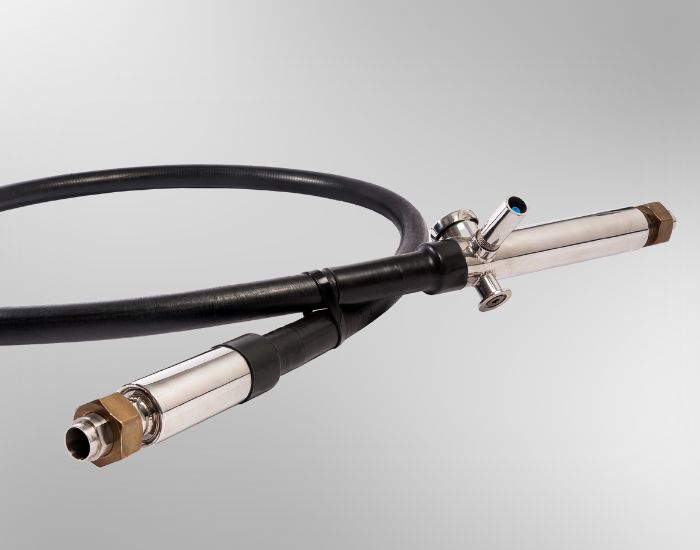
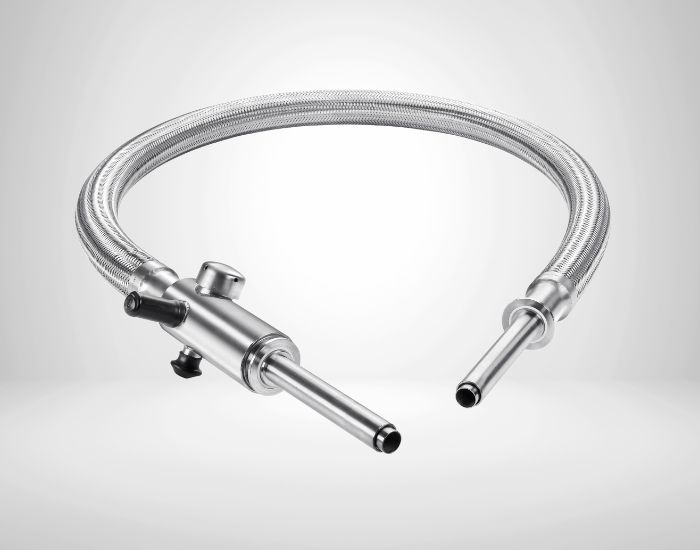
More recently, our HIGHFLEX solution enabled the first intercontinental transfer of liquefied hydrogen by ship, marking the start of developing a global hydrogen supply chain. Our solutions equip the ports of Kobe and Hastings, allowing the safe transfer of hydrogen between dockside storage tanks and the Suiso Frontier hydrogen carrier at mass flow rates of several tons per hour.
Today, Nexans teams design and implement complete cryogenic systems integrating around our flexible solutions rigid vacuum insulated piping, valve and connector systems, safety elements, and support and handling structures.
With our innovation, engineering, and manufacturing capabilities, as well as a partner ecosystem, we have developed unique expertise and global experience in delivering transfer solutions for all types of cryogenic fluids, such as LN2, LH2, or LHe.
Cryogenic transfer systems: key infrastructure of the hydrogen value chain
In the race to net zero, hydrogen complements electrification to decarbonize energy, mobility, and industry. Demand for renewable hydrogen is rapidly increasing, with numerous projects underway to deploy production and use on a large scale:
- Major seaports are shaping the future of maritime hydrogen supply by structuring to become ‘hydrogen hubs’ with the development of hydrogen terminals, storage facilities, and connections to land infrastructures.
- Airports are actively preparing for the transition to low-carbon aviation by planning the integration of production, liquefaction, and refueling facilities for liquefied hydrogen.
- In Europe, the Alternative Fuel Infrastructure Regulation (AFIR) foresees the deployment of hydrogen refueling stations in each urban node and every 200 km on the road axes of the Trans-European Transport Network (TEN-T) by the end of 2030.
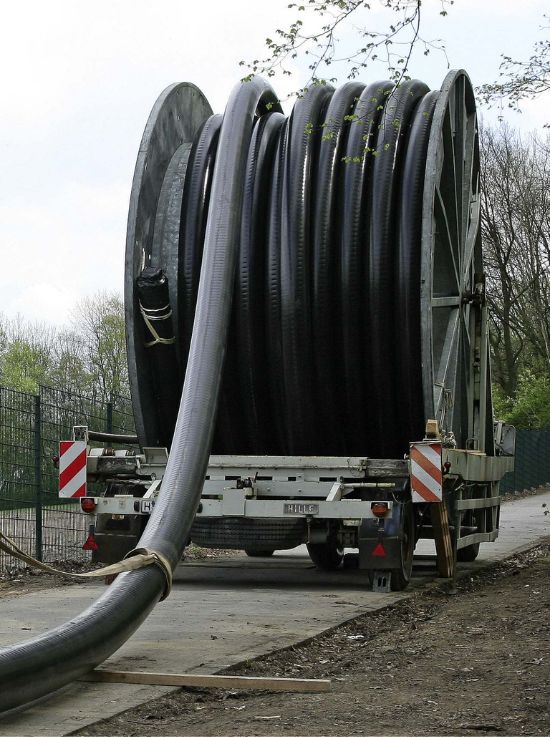
Challenges related to cryogenic systems
The liquid form of hydrogen allows storing significant amounts of energy in relatively limited volumes. However, the very low liquefaction temperature of hydrogen (-253°C or 20°C above absolute zero) requires dedicated storage and transfer systems, ensuring the highest levels of safety and thermal efficiency. This involves avoiding risks associated with ice formation and oxygen condensation, as well as limiting hydrogen boil-off to minimize reliquification costs.
10 millions
tons: quantity of hydrogen that Europe
aims to produce and import by 2030
150 mm
largest internal diameter of
our flexible lines in operation to date
4 K
transfer temperature of liquefied
helium. Our cryogenic lines are
designed to ensure optimal
performance even at the
lowest temperatures
Nexans Cryogenic Systems: 50 years of experience in energy transition
Organized in project mode and agile, Nexans Cryogenic Systems teams accompany you throughout your project, from finding technical solutions to designing and implementing integrated cryogenic transfer solutions tailored to your application:
Hydrogen mobility:
- Road mobility: Nexans is committed to several LH2 mobility actors to develop LH2 refueling solutions from storage tanks to pumps and from pumps to vehicles, easily scalable and duplicable.
- Airports: Developing mobile and stationary ground refueling systems enabling rapid LH2 aircraft refueling, maximum safety, and limited boil-off.
LH2 Supply Chain:
- Maritime and inland port infrastructures: Nexans facilitates the development of the international liquid hydrogen supply chain with integrated LH2 transfer solutions for terminals (loading arms), ship-to-ship transfer, and multimodal transfer.
Special projects:
- Aerospace infrastructures: Nexans, a historical player in the aerospace adventure, supports space centers in developing new space by designing and realizing high-performance systems for safe refueling of launchers with cryogenic propellants such as LH2 and LOx.
- Energy infrastructures: Nexans is part of the European consortium developing the SCARLET project, funded by the European Union, to develop hybrid systems integrating both superconducting electricity transport and liquefied hydrogen transport in a single cryogenic envelope. The goal is to enable massive, more efficient, and less costly energy transmission from renewable electricity and hydrogen production sites.
As with electricity grids, hydrogen transport and storage infrastructures are essential to the hydrogen value chain. They must combine operational safety, reliability, and efficiency to timely deliver the right amount of hydrogen. Our LH2 transfer cryogenic systems make the LH2 supply chain a reality.

Hydrogen Techno Platform Manager, Nexans

